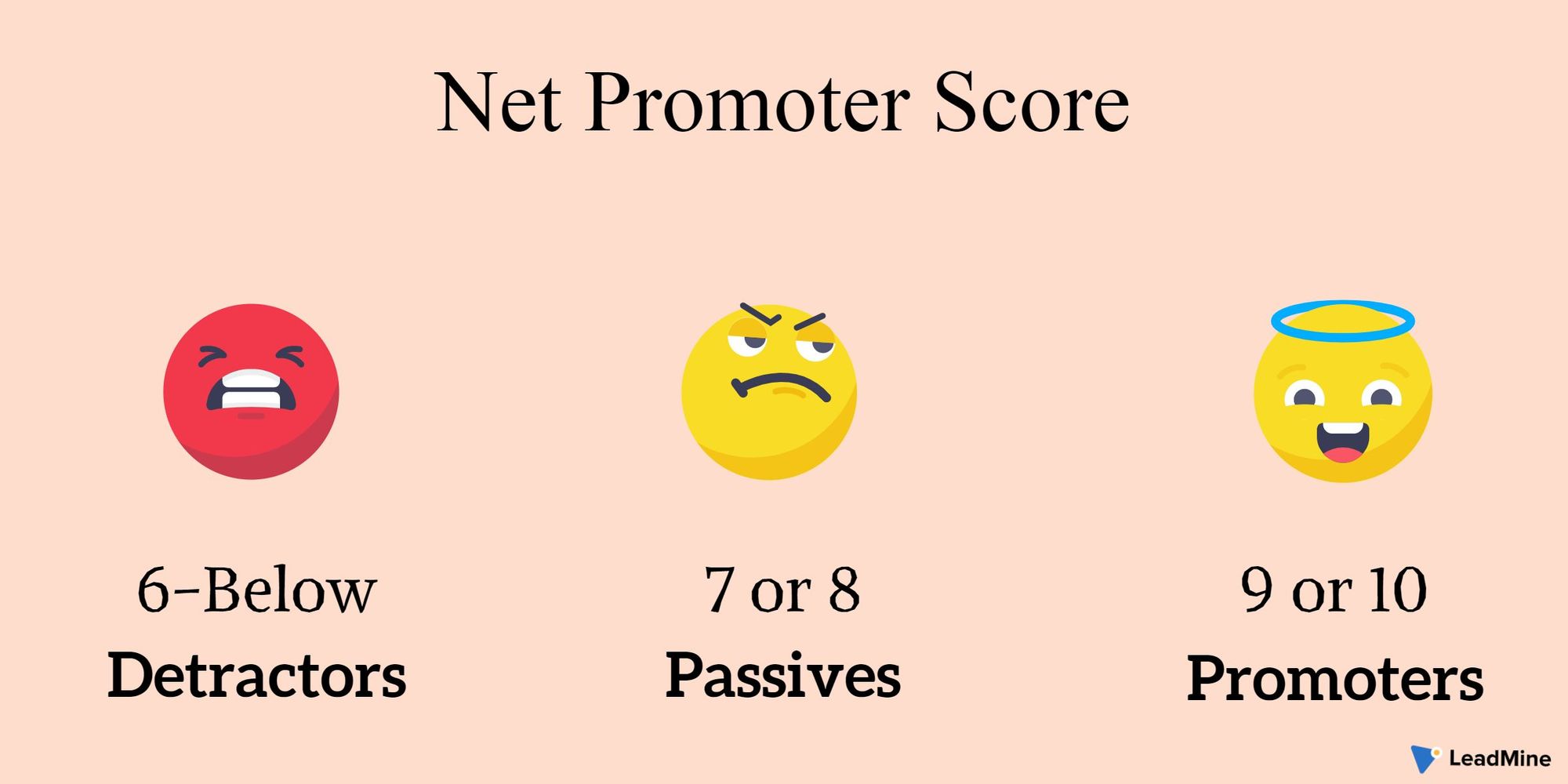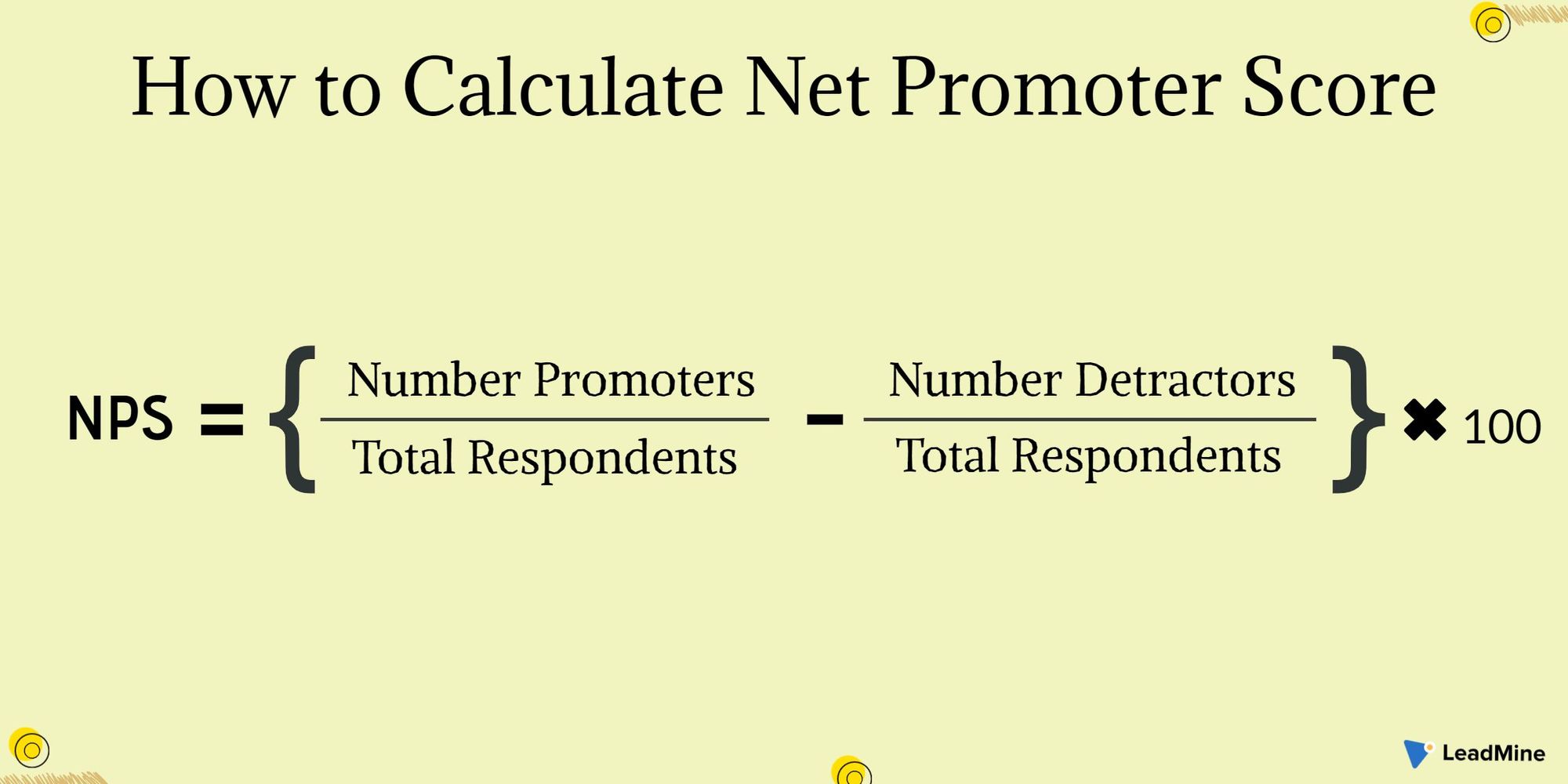The net promoter score (also known as the NPS or NPS score) was created in 2003 by Fred Reichheld, a partner at Bain & Company. His purpose was to provide a rapid assessment of a company to learn how well they were generating customer satisfaction and loyalty.
Here we will cover the following:
- What is the Net Promoter Score?
- Why Net Promoter Score is Important?
- How to Calculate Net Promoter Score?
- How to Implement Net Promoter Score?
- How to Improve Net Promoter Score?
- Benefits of Net Promoter Score
What is the Net Promoter Score?
The Net Promoter Score is a straightforward metric that provides valuable insight into two critical components of a business: loyalty and brand advocacy. NPS is calculated by asking customers if they would suggest a product or service to family or friends. On a scale of 0 to 10, with 0 being extremely unlikely and ten being extremely likely, the respondents rate their score.
Based on their score, they are divided into three categories: detractors, passives, and promoters.

- ‘Detractors' gave a score of less than or equal to 6. They don't like what you're selling or how you're doing business. They are unlikely to buy from the company again, and their actions may harm the company's brand through unfavourable word of mouth.
- ‘Passives' received a 7 or 8 on the scale. They are moderately satisfied, but if given the opportunity, they would readily move to a competitor's offering. They are unlikely to spread poor word-of-mouth, but they aren't enthusiastic enough about your products or services to promote them.
- ‘Promoters' gave a score of 9 or 10. They are enthusiastic about the company's products and services. They are loyal customers who enthusiastically advocate the company's products and services to other potential customers.
It's good news for your business if you have a response pool made up of promoters. If, on the other hand, the bulk of your customers fall into the ‘Passives' and ‘Detractors' categories, it means you need to spend more time on them. NPS is, without a doubt, one of the most effective loyalty metrics available to any company.
Why Net Promoter Score is Important?
The Net Promoter Score (NPS) can be used to forecast business growth. When your company's net promoter score is high (or at least over the industry average), you know you have a healthy relationship with customers who are likely to act as brand advocates, fuel word of mouth, and drive a positive growth cycle.
On a strategic level, NPS is a valuable metric, but it isn't enough to be meaningful or portray a whole picture by itself. Because the entire NPS system allows businesses to ask follow-up questions as part of the standard NPS survey and it is critical.
Organizations of all sizes can learn what they're doing well and where they may improve by asking customers why they gave a specific score. You can create internal benchmarks by tracking and quantifying a score over time. It also rallies all employees around a single mission-critical goal: gaining more devoted customers.
Positive word-of-mouth and referrals from loyal consumers help to bring in new customers. As a result, the company's sales and growth improve significantly. Furthermore, the cost of gaining new customers is decreased dramatically. Customers that are loyal to you go above and beyond what even the most inventive advertising efforts can achieve.
As a result, it's vital to monitor your Net Promoter Score on a frequent basis and take the necessary steps to improve it.
How to Calculate Net Promoter Score?
Subtract the percentage of Detractors from the percentage of Promoters in your survey's "Would Recommend" question to determine Net Promoter Score. The Neutrals are completely ignored.

How to Implement Net Promoter Score?
There are several applicable best practices you should follow when implementing NPS. It is not as simple as adding a new question to your existing customer feedback survey.
However, there are four steps to launching Net Promoter Score in a business properly.
Step 1: Identify the "Points of Contact" for Your Customers
The initial stage of your NPS system is to understand the contact or touchpoints and how they affect your customer and their experience. Regardless of whether the survey is focused on ‘transactions' or ‘relationships,' these customer contact/touchpoints must be considered.
Step 2: Create an NPS System
It's critical to figure out the connections between your NPS survey questions and your company's KPIs (Key Performance Indicators). The type of NPS survey undertaken – transactional or relationship-focused, sampling methodology, and data collection technique – online or telephone – must all be taken into account.
Step 3: Recognize the Factors that Influence Customer Loyalty
It is critical to understand what influences the behaviours and feelings of your detractor, passive, and promoter customers who provide feedback based on their particular customer experiences in order to make adjustments. To effectively get better information and develop the customer relationship, it may be required to undertake post-survey follow-up to clarify feedback supplied.
Step 4: Establish a Closed-loop System
An effective closed-loop system is essential for front-line, middle management, and senior management. Customer service, technical support, and sales personnel are critical in developing promoters and neutralizing detractors. Middle managers coach employees to know how to create positive customer experiences. Senior managers assist in the development and implementation of appropriate recognition and communication systems, as well as ensuring that NPS results are consistent with strategy implementation.
How to Improve Net Promoter Score?
Improving your net promoter score is a long-term endeavour that demands careful strategy and execution. NPS has so many benefits, it's critical to get it right. For this reason, we have compiled a list of six NPS strategies that will help you turn your company around in no time.
- Focus on Detractors & Passives
Incentives, extra care, and outstanding engagement can be used to satisfy your detractors and passives. Improve your Net Promoter Score by converting them into promoters. - Powerful Brand Promotion
Make it simple for your customers to spread the word about your business through referrals and recommendations, ultimately strengthening its image. - Reduce Average Resolution Time
Resolve issues immediately and respond promptly. While dealing with challenges, provide a temporary remedy. Your net promoter score rises as your average resolution time decreases. - All Teams Should be Involved
Ensure that your company's customer satisfaction and happiness are a top priority for all departments. Bring your entire team on board; a better customer experience will follow. - Monitor Your NPS Continually
NPS is a continuous process, not a one-time event. As a result, create a method for analysing, tracking, and improving your net promoter score. - Don’t Forget the Promoters
Maintain solid relationships with promoters by engaging with them on a frequent basis. Encourage them to share the word about you. Improve by learning from your promoters.
Benefits of Net Promoter Score
The net promoter score metric might be beneficial to your company. Here are five reasons why integrating NPS in your company might pay off big time.
- Increase Customer Experience
You may learn what your customers think of your product or service by using an NPS survey. You may take it a step further and see why they gave a particular rating. This will assist you in determining the disconnect between what you offer and what customers demand. Find out what they didn't like about a feature or how bad the service was, and fix it right immediately. - Keep Excellent Customer Relationships
Use NPS to figure out which customers need more attention and cajoling - of course, the detractors and passives. You can check in with your promoters on a regular basis to make sure they're happy. To turn the frowns of passives and detractors upside down, you may need to go one extra step. - Examine the Health of Your Company
A low net promoter score means your company isn't moving in the correct way. At any point in its existence, a company does not need a pool of grumpy customers. As a result, maintain gathering NPS data to determine where your company needs to improve and make the necessary changes as soon as possible. This will improve the entire customer experience as well as the NPS. - Recognize the Big Picture
While customer satisfaction measures such as CES and CSAT focus on a customer's most recent engagement with a product, NPS helps you see the larger picture. As a result, rather than individual touch-points, you can get a sense of the customer experience journey where a customer had with you. - Increase the Effectiveness of Referral Marketing
Positive word-of-mouth referrals, like the phrase "A picture is worth a thousand words," go above and beyond what the best marketing techniques can achieve. As a result, it's critical that a customer enjoys the finest possible customer experience with your company. Utilize the power of referrals from your existing customers to quickly obtain new customers.
Conclusion
The Net Promoter Score is extremely essential. Checking in with your customer base on a regular basis to see how loyal they are to your product or service is a wonderful approach to provide your team with the business intelligence they need to build long-term customer relationships and boost income.
Share your thoughts about Net Promoter Score (NPS) with us at LeadMine.





